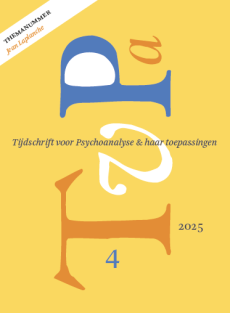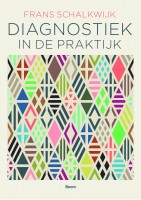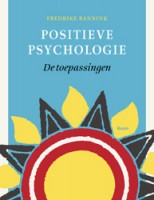Psychoanalyse als wetenschap: wat wil zij niet weten?
Summary
The scientific underpinning of psychoanalysis is a matter of the utmost concern for the psychoanalytic community, as may be concluded from numerous papers in the leading psychoanalytic journals and official writings of psychoanalytic societies. However, it is questionable whether the consequences of this concern are in fact drawn in psychoanalytic practice and the policy-making of psychoanalytic societies. What is required is a process of permanent education in and orientation towards new scientific developments and insights relevant to psychoanalysis, for both individual psychoanalysts and psychoanalytic societies equally. The psychoanalytical validity of recent results of attachment theory and neurobiological research is demonstrated in this article by means of a vignette. The lesson that may be drawn from the history of attachment theory in psychoanalysis is the necessity of open communication between psychoanalytic societies and research institutes and universities.
Literatuur
- Bower, G.H., en H. Sivers (1998), Cognitive impact of traumatic events. Development and Psychopathology 10, p. 625-653.
- Freedman, N., J.D. Hoffenberg, N. Vorus, e.a. (1999), The Effectiveness of Psychoanalytic Psychotherapy: The role of treatment duration, frequency of sessions, and the therapeutic relationship. Journal of the American Psychoanalytic Association 47, p. 741-772.
- Freud, S. (1909), Analyse van de fobie van een vijfjarige jongen (‘De kleine Hans’). Sigmund Freud Nederlandse Editie: Ziektegeschiedenissen 1. Boom, Amsterdam, p. 15-159.
- Gill, M.M., J. Simon, G. Fink, N.A. Endicott, I.H. Paul (1968), Studies in audio-recorded psychoanalysis: I. General considerations. Journal of the American Psychoanalytic Association 16, p. 230-244.
- Gunderson, G., en G.O. Gabbard (1999), The case for psychoanalytic therapies. Journal of the American Psychoanalytic Association 47, p. 679-704.
- Holmes, J. (1992), Between Art and Science. Routledge, Londen.
- Holmes, J. (1993), John Bowlby and Attachment Theory. Routledge, Londen.
- Ladan, A. (2000), Het wandelend hoofd. Boom, Amsterdam.
- Leeuwen, W.F. van (1973), Het psychoanalytisch minimum. In: A.P. Cassee, P.E. Boeke, J.T. Barendregt (red.), Klinische Psychologie in Nederland deel I. Van Loghum Slaterus, Houten, p. 56-79.
- Luyten, P. (2001), Psychoanalyse: de berichten over mijn dood zijn (opnieuw) sterk overdreven. Tijdschrift voor Psychoanalyse 7, p. 5-24.
- Main, M. (2000), The organised categories of infant, child, and adult attachment: flexible vs inflexible attention under attachment related stress. Journal of the American Psychoanalytic Association 48, p. 1055-1097.
- Michels, R. (2000), The Case History. Journal of the American Psychoanalytic Association 48, p. 355-375
- Nersessian, E. (1998), A cat as fetish: a contribution to the theory of fetishism. The International Journal of Psycho-Analysis 79, p. 713-727.
- Renik, O. (1992), Use of the analyst as a fetish. Psychoanalytic Quarterly 56, p. 542-563.
- Richards, A.K. (1989), A romance with pain: a telephone perversion in a woman? International Journal of Psycho-Analysis 70, p. 153-164.
- Sandler, J., en A.M. Sandler (1983), The ‘second censorship’, the ‘three box model’ and some technical implications. International Journal of Psycho-Analysis 64, p. 413-427.
- Stern, D. (1995), The motherhood constellation: a unified view of parent-infant psychotherapy. Basic Books, New York.
- Strien, A.P.M, van (1999), Empathie. Thela Thesis, Amsterdam.
- Waning, A. van (1994), Geen Woorden Maar Daden. Thesis Publishers, Amsterdam.
 © 2009-2025 Uitgeverij Boom Amsterdam
© 2009-2025 Uitgeverij Boom Amsterdam
ISSN 1382-516x
De artikelen uit de (online)tijdschriften van Uitgeverij Boom zijn auteursrechtelijk beschermd. U kunt er natuurlijk uit citeren (voorzien van een bronvermelding) maar voor reproductie in welke vorm dan ook moet toestemming aan de uitgever worden gevraagd:
Behoudens de in of krachtens de Auteurswet van 1912 gestelde uitzonderingen mag niets uit deze uitgave worden verveelvoudigd, opgeslagen in een geautomatiseerd gegevensbestand, of openbaar gemaakt, in enige vorm of op enige wijze, hetzij elektronisch, mechanisch door fotokopieën, opnamen of enig andere manier, zonder voorafgaande schriftelijke toestemming van de uitgever.
Voor zover het maken van kopieën uit deze uitgave is toegestaan op grond van artikelen 16h t/m 16m Auteurswet 1912 jo. Besluit van 27 november 2002, Stb 575, dient men de daarvoor wettelijk verschuldigde vergoeding te voldoen aan de Stichting Reprorecht te Hoofddorp (postbus 3060, 2130 KB, www.reprorecht.nl) of contact op te nemen met de uitgever voor het treffen van een rechtstreekse regeling in de zin van art. 16l, vijfde lid, Auteurswet 1912.
Voor het overnemen van gedeelte(n) uit deze uitgave in bloemlezingen, readers en andere compilatiewerken (artikel 16, Auteurswet 1912) kan men zich wenden tot de Stichting PRO (Stichting Publicatie- en Reproductierechten, postbus 3060, 2130 KB Hoofddorp, www.cedar.nl/pro).
No part of this book may be reproduced in any way whatsoever without the written permission of the publisher.
Nieuwsbrief Boom Psychologie
Meld u nu aan en ontvang maandelijks de Boom Psychologie nieuwsbrief met aantrekkelijke aanbiedingen en de nieuwe uitgaven.
Aanmelden


